Start planning your trip to one of the most inclusive cities in Europe by adding these LGBTQI+ businesses and sites to your Berlin itinerary…
By Stephan Petar
While the city’s dress code may be black, Berlin oozes a colourful LGBTQI+ scene. Berlin’s queer history dates back to the 19th century. It was home to the world’s first gay and lesbian organization, The Scientific-Humanitarian Committee, which was founded in 1897. In the 1920s, according to visitBerlin, the city became a haven and refuge for the global queer community.
This flourishing scene was shattered in the 1930s as the Nazis tightened laws around homosexuality. Restrictions were toughest on men, with anywhere from 5,000 to 15,000 sent to concentration camps, according to the Holocaust Memorial Day Trust. It would take decades for the city to regain its queer glory.
Today, Berlin is an attractive destination for queer travellers, with a reputation for being sex positive and accepting of all sexualities and identities. As a whole, Germany is the sixth friendliest LGBTQI+ country in the world, according to the Spartacus Gay Travel Index.
So pack those bags for a journey through Berlin’s thriving queer scene! From its gay village (known as Schöneberg) to its many boroughs, the city proves that LGBTQI+ life has no boundaries.
Where to party, cruise, and scream pop anthems
Berlin’s nightlife is legendary, lasting into the early morning…or all day. If you’re looking for a night of dancing, bookmark SchwuZ (Rollbergstraße 26), which Swiss traveller Rodrigo calls “a beacon of hope for mainstream queers in Berlin.” It’s one of Europe’s largest queer clubs and the oldest in Germany. Its neon “Cheers Queers” sign greets partygoers, while its orange riser seating is where friendships ignite. Inside the venue are three rooms where DJs spin pop and techno. On occasion, it hosts drag shows and concerts. “The Cathedral” room reflects the club’s industrial heritage with its soaring ceilings and concrete columns, left over from when it was a brewery.
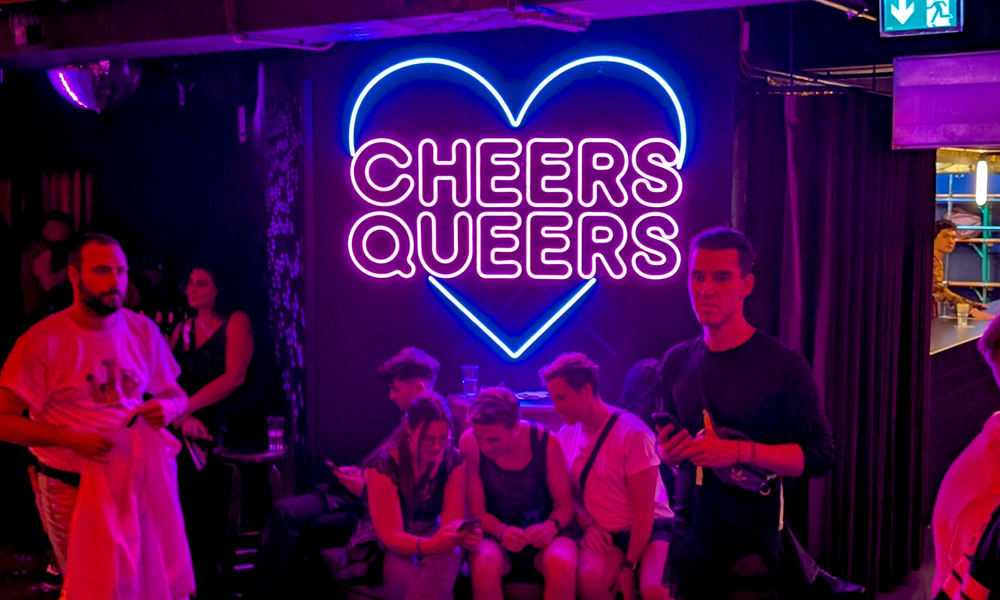
Möbel Olfe (Reichenberger Str. 177) in Kreuzberg is perfect for a bar outing. Decorated with satellite dishes and disco balls, it’s one of the most popular bars for the queer community. Tuesday nights are usually populated by lesbians, while Thursday is for the gays. The rest of the week is just queer fun.
For a night of cruising, head to BoyBerry (Motzstraße 19). It’s where gay men of all ages grab a drink before exploring its maze and dark rooms.
Where to discover Berlin’s artistic side
Berlin is covered with murals and graffiti that take up any available space – including the statues of its ambassador, Buddy Bear. Each art piece tells a story about the city, the country or the world.
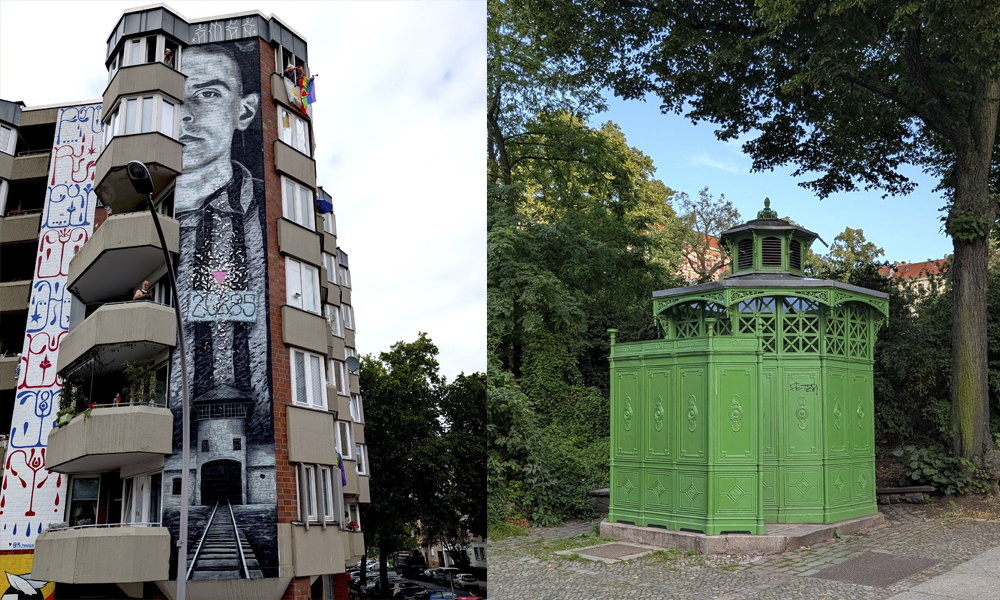
Contemporary studio Galerie Newman (Kalckreuthstraße 14) displays and sells queer art in various media by more than 70 artists from around the world. Its walls feature tender, kinky and thought-provoking pieces. It gives audiences a space to explore the creativity and diversity that queer art can offer.
In Schöneberg, the exterior wall of Bülowstraße 94 remembers a man persecuted for being homosexual. Belgian-American artist Nils Westergard’s The UNforgotten is an emotionally striking piece. A man towers over Auschwitz, bearing the number 20285 and a pink triangle, used to identify homosexuals, on his chest. The triangle is surrounded by 200 metal origami birds by Mademoiselle Maurice. The man was Walter Degen, a locksmith sent to Auschwitz at age 32, before being moved to Mauthausen. It is unknown if he survived.
Where to learn about Berlin’s long queer history
History is scattered throughout Berlin and can be both haunting and joyful. In Tiergarten, a black concrete cube with a screen honours the homosexuals persecuted under the Nazis. Designed by Michael Elmgreen and Ingar Dragset, the memorial is a living monument. Peek inside it to watch a video loop of homosexual love – typically of same-sex couples kissing. The memorial creates “a symbol against intolerance, discrimination and persecution of homosexuals all over the world.”
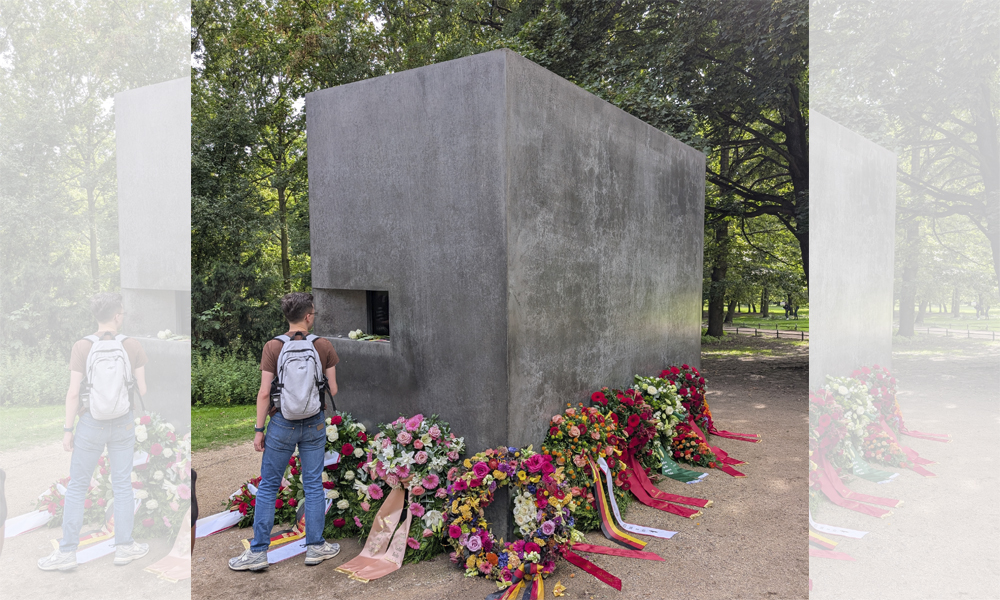
Gay history is also in plain sight. At Naumannstraße 55 and Chamissoplatz 8, there are green-coloured decorated cast-iron octagonal structures. The buildings, popular in the 1920s, were built as urinals for men. Known by locals as Café Achteck (Octagon Café in English), the historic bathrooms tell a hidden story about the city’s gay cruising history. While many have been converted into food stalls, some are still used as urinals today – though we can’t confirm if cruising still occurs.
For an overview of queer life, Schwules Museum (Lützowstraße 73) gives patrons a wide perspective on LGBTQI+ life. Founded four decades ago by a group of students, the museum has grown from focusing only on gay men to presenting perspectives from all facets of LGBTQI+ life in Germany and beyond. After a look at all the videos, clothing, photography, magazines and more on display, visitors will feel proud of the accomplishments made by the community, and possibly laugh, or cry, at the stories being told.
Where to eat and drink and yell “Prost!”
Come to Berlin with an empty stomach! Between the schnitzel, pretzels, currywurst and beer, it is a filling experience. For a variety of schnitzels (18 to be exact), head to Restaurant Elefant (Fuggerstraße 18). It’s the fuel-up spot for many queer partygoers, with visitBerlin reporting that the restaurant welcomes club and festish outfits as long as they’re PG.
Toms Wurst (Motzstraße 19) offers the “original Berliner currywurst.” It’s hard to miss, with its rainbow-coloured sign and sling chairs. The meat currywurst is a classic, but the vegan option is equally good, if not better.
To drink something gay, head to BRLO Brwhouse (Schöneberger Straße 16 or Giesebrechtstraße 15) for a Queer Beer that gives back. It’s a full-bodied beer with floral and bergamot notes. For each bottle purchased, 20 cents go to Queer Amnesty. For food, the family-style option is the best way to try a bit of everything from its seasonal menu.
For those who cannot decide, do a food tour! Fork & Walk Food Tours offers a bunch of different themed tours that blend history with delicious bites.
Where to shop for queer books…or a jockstrap
There’s no shortage of LGBTQI+ storefronts in Berlin. Some, like Brunos Berlin (Maaßenstraße 14), have a bit of everything. Others specialize in queer decor, trinkets, underwear or kink apparel.
Berlin’s queer bookstores have become institutions known worldwide. Prinz Eisenherz (Motzstraße 23) is the oldest queer bookshop in the city, dating back to 1978. It carries books across the LGBTQI+ spectrum in various languages for all ages. It also has a large DVD section – for those who still own a DVD player. In the Neukölln neighbourhood, She Said (Kottbusser Damm 79) uplifts the voices of female and queer authors. Its white walls make the colourful book spines pop, and it even has a café.
Where to find LGBTQI+-friendly accommodations
Accommodations can be one of the hardest decisions. Some travellers want to stay by the city centre in proximity to major attractions like Berlin Dom or the East Side Gallery. Others want to be in the heart of local neighbourhoods for an authentic experience.
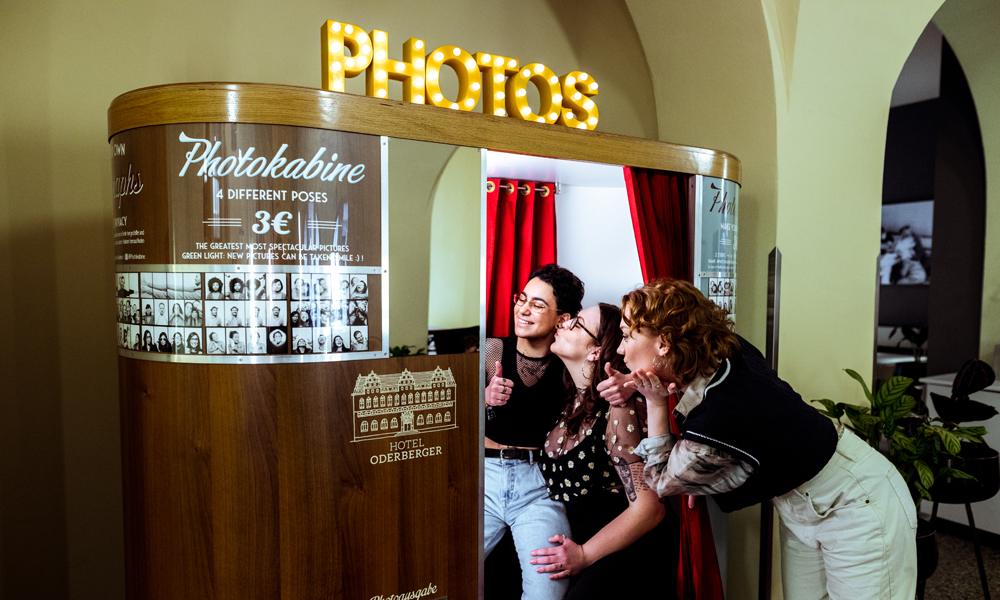
For many LGBTQI+ travellers, there is the extra consideration of booking a place where they can be accepted as they are. The Pink Pillow Berlin Collection helps alleviate that worry. This initiative, by visitBerlin, features 40 hotels and hostels certified as LGBTQI+ friendly. The program requires members to take part in inclusion training and actively support the community, along with other requirements.
The Park Plaza Berlin (Lietzenburger Str. 85), in the Charlottenburg neighbourhood, is one of those hotels. The hotel is pretty queer, honouring visual pop artist Andy Warhol. Its 152 rooms blend modern elements with Warhol’s work scattered throughout, making each room a game of ‘I Spy.’ It has banana door handles, multicoloured lips on the floor and mirrors in the silhouette of Marilyn Monroe, and scattered throughout are photos by Warhol’s friend Christopher Makos. In some rooms, larger-than-life images of the artist adorn the walls. It has a gym and sauna in the basement, a backyard patio, and a bar called the Factory Bar, named after the artist’s studio.
This trip was made possible by Air Transat and visitBerlin. Voted “World’s Best Leisure Airline” by passengers, Air Transat now offers non-stop summer flights from Toronto to Berlin. Fly to Germany in its Economy Class, where a meal, light snack and wine are included along with a carry-on and personal item.
STEPHAN PETAR is a born and raised Torontonian, known for developing lifestyle, entertainment, travel, historical and 2SLGBTQI+ content. He enjoys wandering the streets of any destination he visits, where he’s guaranteed to discover something new or meet someone who will inspire his next story.


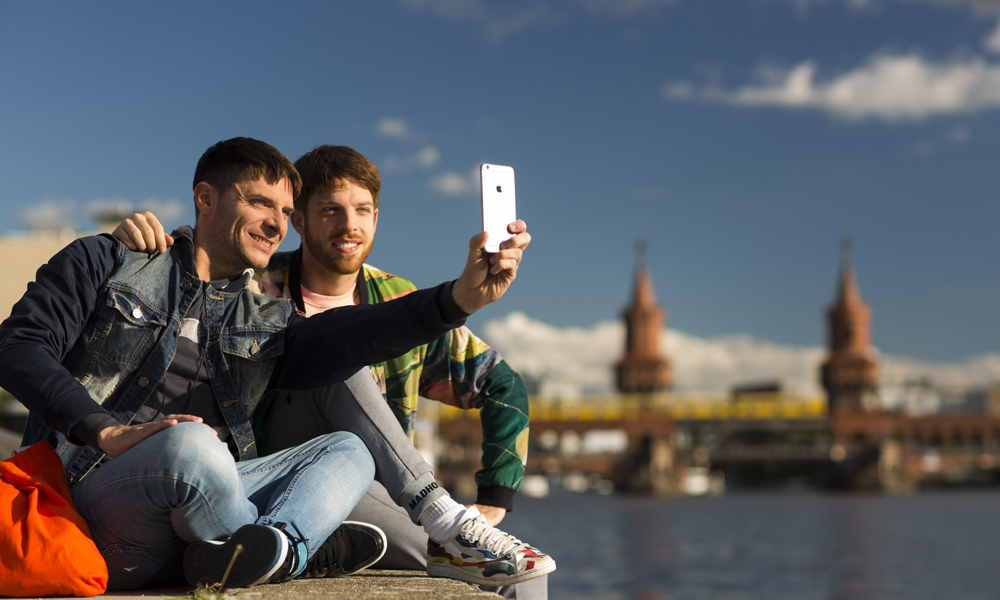

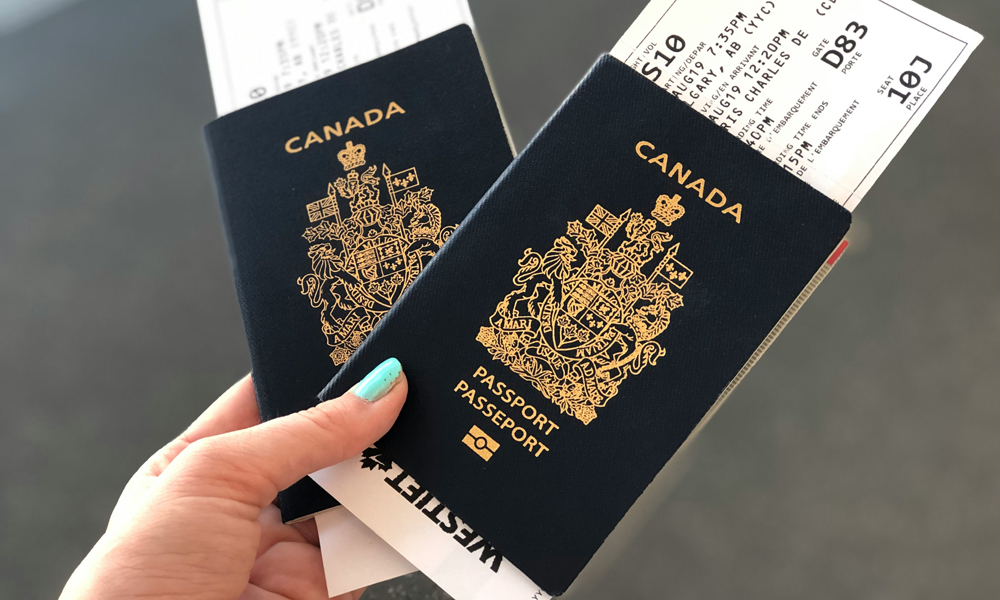

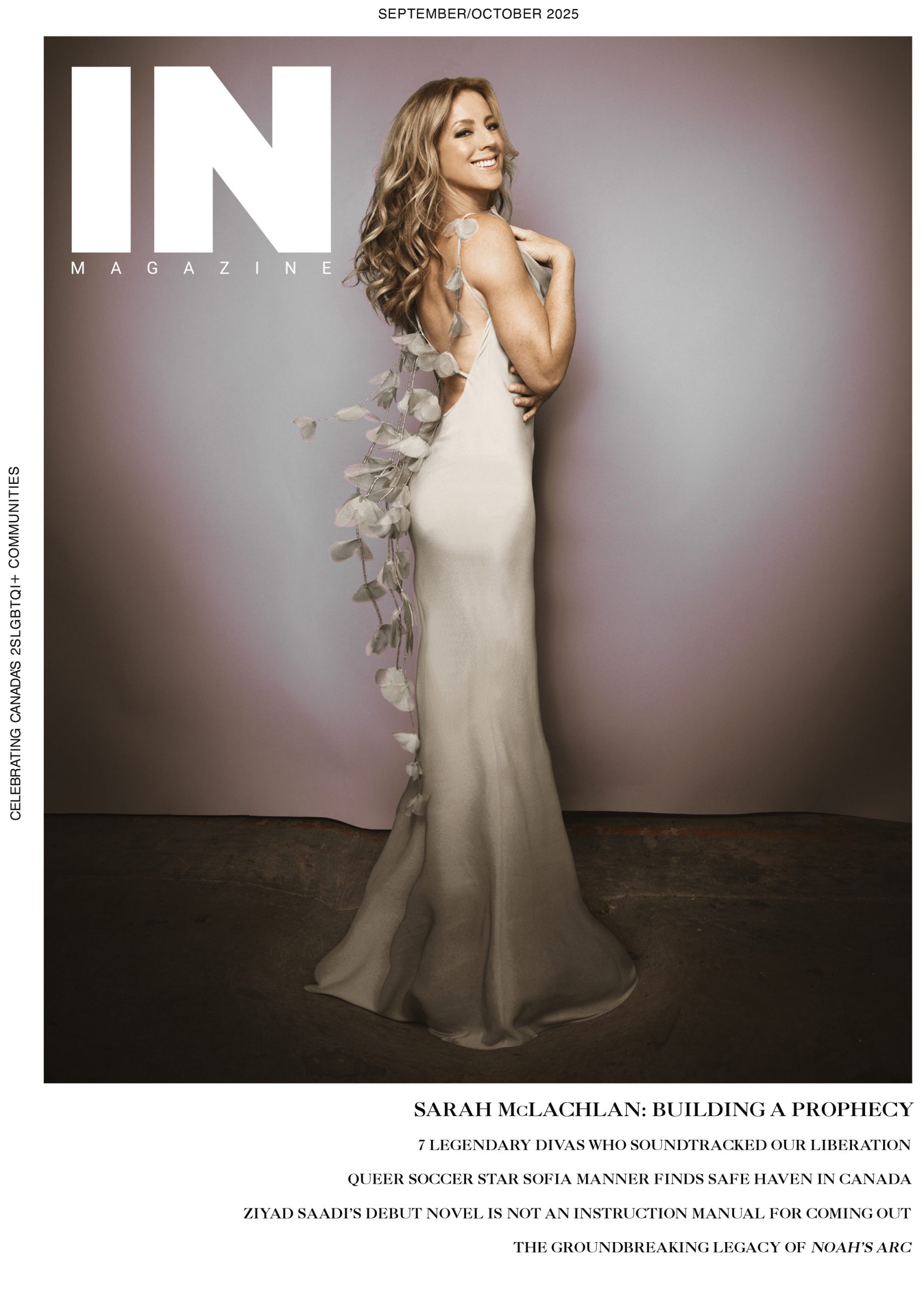
POST A COMMENT